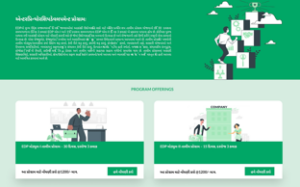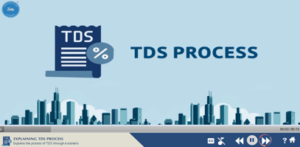We live in a world where everyone is constantly on the move, especially sales professionals across various industries. The sales employee’s workday is different from that of an employee in an office. Commuting to work and preparing for the next client meeting is such a time-consuming task that attending a training session is simply not a priority. Sales require thorough product knowledge, excellent sales techniques and networking skills. Thus, the main objective of sales training is to help sales personnel hone new skills, learn new methodologies to improve their efficiency.
To train a dispersed team who are on the move constantly, organisations have to adopt a flexible and modern approach. The approach is mobile learning is the approach. For sales training, mobile learning is the most popular mode since it delivers training anytime, anywhere and at the fingertips of the learner. Training is accessible at the moment of need, such as while on the train, waiting in line, or between meetings. The mLearning offers training ‘on the go’ that suits desk-less, busy employees with a wide range of skills to learn within a limited time. In addition, it supports multiple devices so learners can access content using whatever mobile device they choose. Learning nuggets that are short, focused, and action-oriented are the best choice for sales representatives that are always on the go. The organization can offer learning paths with multiple short nuggets adapted to various aspects of the learning process using microlearning-based training. For sales teams, these are invaluable, as they provide precise support whenever it is needed.
Ways to leverage learning methods for improved sales training.
1. Gamify The Content
It is important to make sure salespeople are engaged in the learning process. To ensure maximum engagement and reinforcement, an organization can use gamification to motivate sales representatives to actively engage in learning instead of just passively participating. Game elements such as stars, points, timers, badges, power-ups, and leader boards make the training fun and trigger their natural urge to collect more. Gamification and interactive methods spice up training and thereby retain their engagement through the course. It also provides instant feedback to the learners, resulting in increased level of confidence and thus a better outcome.
2. Scenario-Based Training
A good sales representative should be able to make excellent decisions, as well as react quickly to unexpected situations. Including scenarios and simulations in sales training improves employees’ problem-solving skills and critical thinking. Including real-life scenarios and stories in mobile learning helps learners relate to the content and better understand its on-the-job application. When employees learn from trial and error in a risk-free environment, they are better prepared to handle challenging job situations and understand the consequences of their decisions. Scenario-based training also helps sales personnel to handle customers effectively, leading to a successful closure.
3. Embed Videos
Sales is a tough job and designing an effective sales training program can be challenging. The use of video has been proven to create more memorable and engaging learning experiences for learners. Plain text does not appeal to learners’ as much as visual formats, such as videos. For mobile learning, videos are the most popular format to deliver information. Videos are versatile and can be developed in various formats using real/ animated characters, graphics or images to depict real-world scenarios. Short training videos of 2-5 minutes helps sales representatives absorb information faster and easier. Thus, video-based learning provides a perfect solution to address most of the challenges faced by sales teams – strict timelines, low retention of the training and being constantly on the move.
4. Use Podcasts
Organizations strive to provide their employees with training materials that helps them to do their jobs efficiently. Audio content is a very useful format for mobile learning and makes learning more flexible. There are times that visual elements are not necessary for example message from the CEO of an organization or an interview with subject matter experts, in such cases podcast can be a simple and effective mobile learning solution. It is an easy way to absorb information with little effort. Podcasting for sales is the perfect way to cut through their busy schedule as listening is a passive action and requires less attention than reading or watching multimedia files. It also makes information personal and develops a sense of attachment between the learner and their managers. Podcasts can also be used for on-demand performance support or as an additional source of information.
Conclusion
To be a successful sales representative, they must be well-versed in every aspect of the product and service they are selling. Since they have to deal with many people each day, they should be trained in a way that will make them appear knowledgeable about the brand, trustworthy, and reliable. Organizations are now leveraging mobile learning to efficiently train the sales workforce. Mobile learning empowers employees to be in charge of training and engage themselves in meaningful learning 24/7. Mobile learning equips the sales personnel with the right information at the right time making it ideal format of training today’s workforce.






